 When there's a killer on the loose you'd better sleep with one eye open. 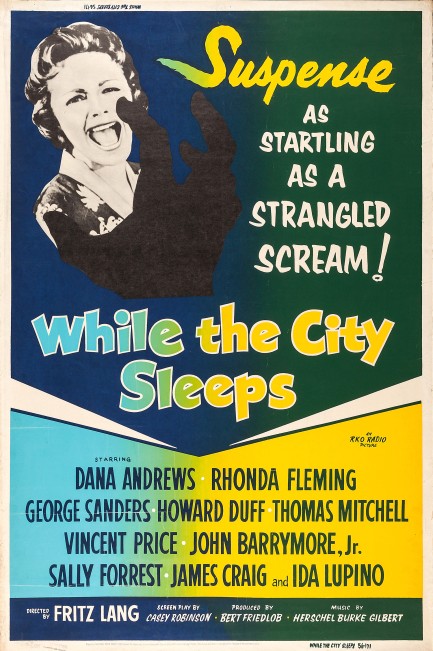
This poster for While the City Sleeps doesn't impress with masterly art the way so many vintage promos do, but its simplicity is, in an oblique sort of way, we think, meant to echo tabloid covers from the era. RKO made a special poster in collaboration with Confidential magazine, which you'll see below. The movie's plot is pure tabloid fodder. A serial killer has slain women in New York City, leaving the cryptic message “Ask mother,” written on the walls of one murder scene. Vincent Price, owner of Kyne News Service, part of a media empire comprising ten newspapers, a wire service, and other interests, offers the position of executive director to three employees in order to draw them into cutthroat competition with each other. Soon it becomes clear that finding the identity of the “lipstick killer” is the winning move. Intrigue and subterfuge take over the office. Everyone gets involved, from senior editors to stringers to gossip columnist Ida Lupino, but the killer is too clever to be caught.
At least until intrepid Pulitzer Prize winning television reporter Dana Andrews airs a scornful and taunting broadcast, deliberately setting up his own fiancée as bait. He doesn't even ask her permission. Well, he does, but only after arranging to publish their engagement announcement in the New York Sentinel right next to a story about the killer. Reckless? Yes. Presumptuous? For sure. There are intertwined plotlines here, but Andrews using his true love as a lure was the most interesting aspect for us. He isn't the only heel on display. The movie is ostensibly about a serial killer, but is really a framework for exposing backbiting and cynical ambition in the big city. Director Fritz Lang, in what was his penultimate U.S. film, explores the cruel banality of what, these days, some call “hustle culture,” and brings the production to a conclusion that's, in the words of Thomas Mitchell's character, “Neat, but nasty.” Our words are: a mandatory watch. While the City Sleeps had a special world premiere today in 1956. 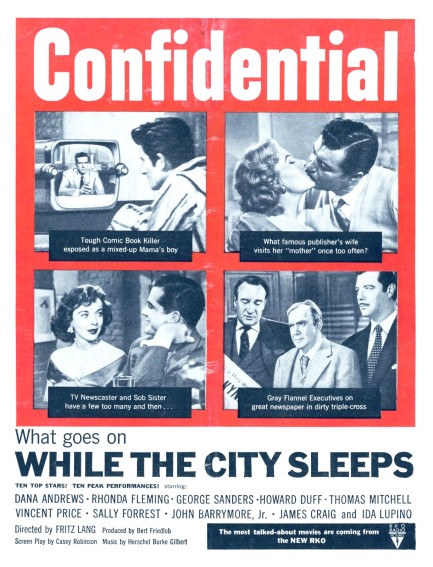 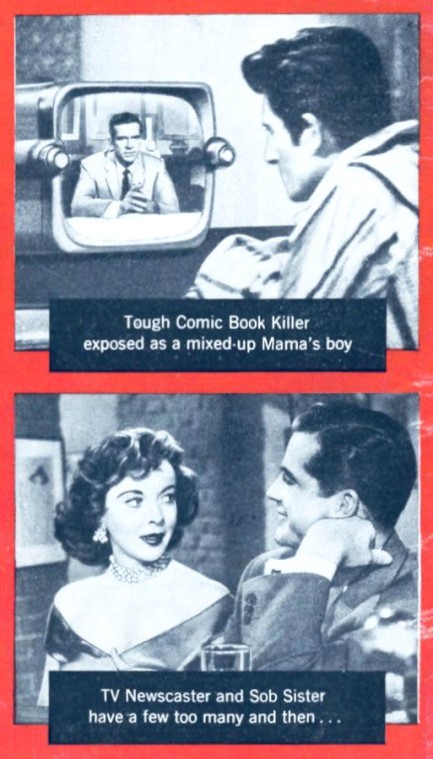 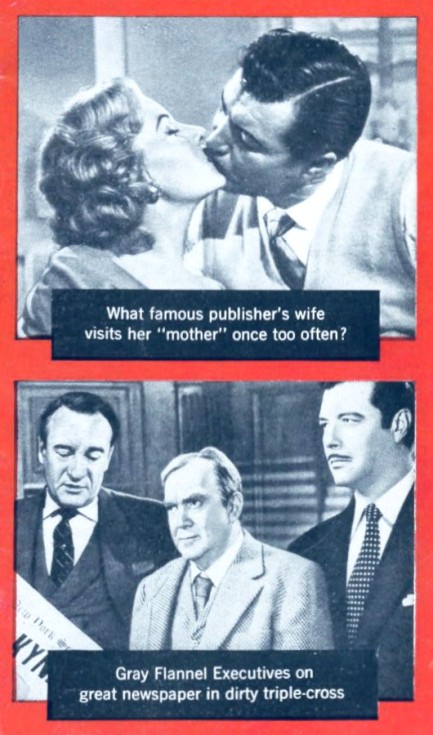 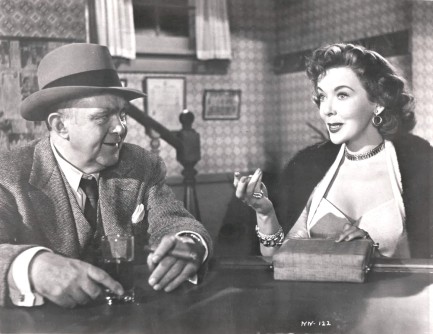 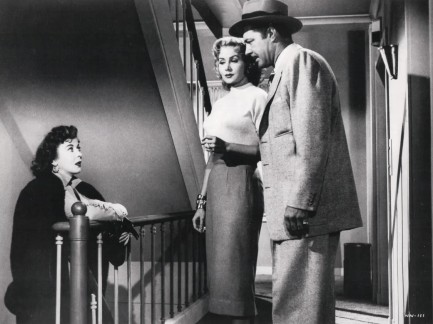 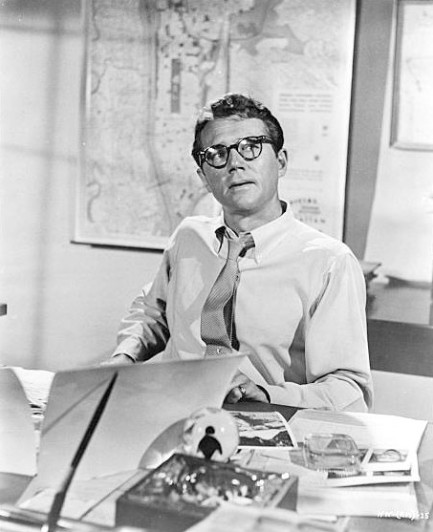 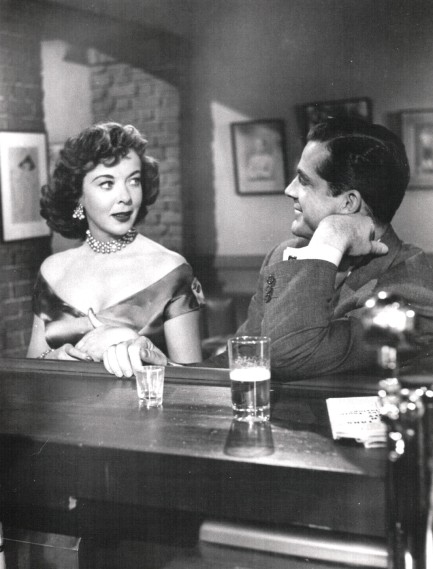 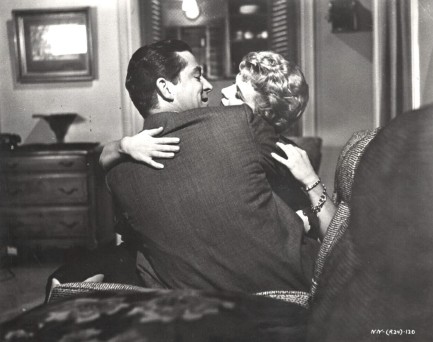 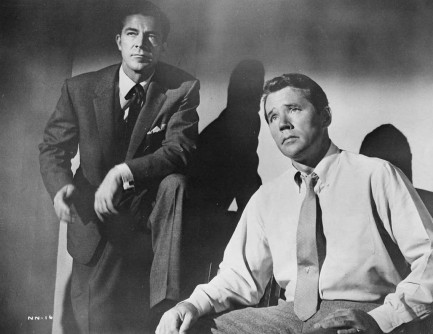 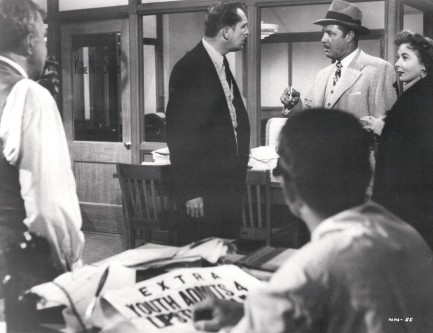 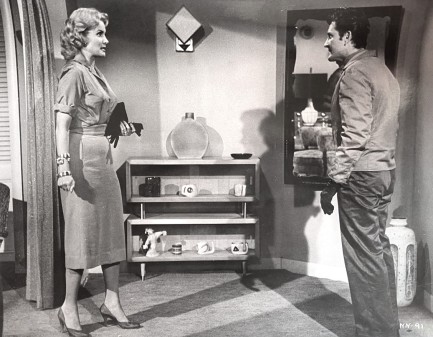 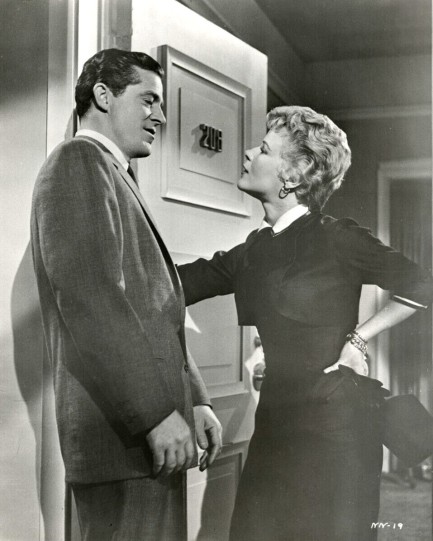 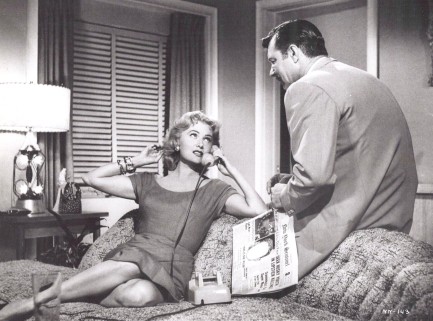 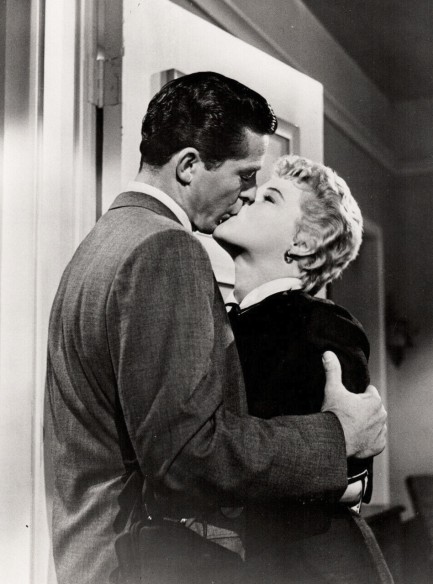 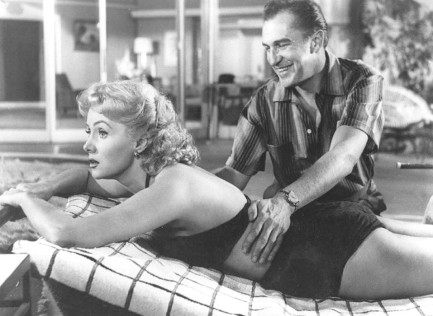 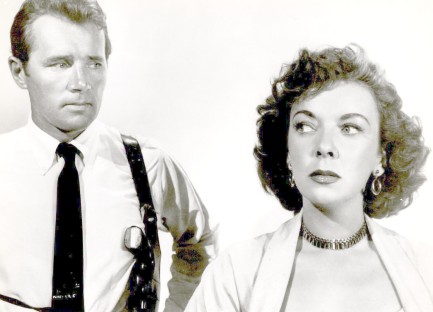 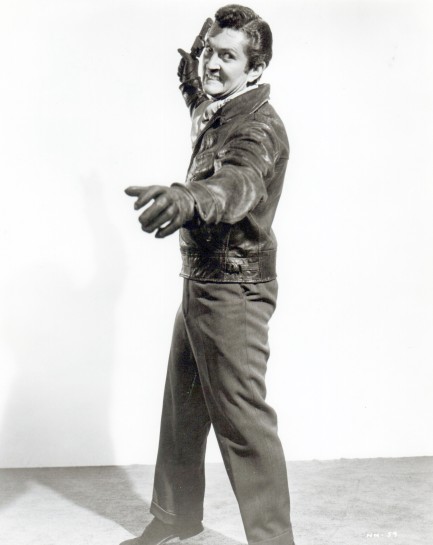 Edit: Vintage movies are excellent windows into bygone customs and practices. There's a great moment in this one. Rhonda Fleming and James Craig are chatting in her apartment late one night when the doorbell unexpectedly buzzes. They look at each other confused for a second, then Fleming says, “It's probably the drugstore. That was the last bottle of Scotch.” Edit: Vintage movies are excellent windows into bygone customs and practices. There's a great moment in this one. Rhonda Fleming and James Craig are chatting in her apartment late one night when the doorbell unexpectedly buzzes. They look at each other confused for a second, then Fleming says, “It's probably the drugstore. That was the last bottle of Scotch.”
You know, there were a lot of things wrong with the mid-century era. But there were a few things right too. Getting the all-night drugstore to deliver booze has to be one of the most right things we've ever heard of, so we give thanks to While the City Drinks—er Sleeps—for clueing us in, and suggest you call your congressional rep immediately and ask for a law allowing pharmacies to deliver alcohol. If not for yourself, do it for the children.
 Strange ideas from the minds and lenses of mid-century promo photographers. 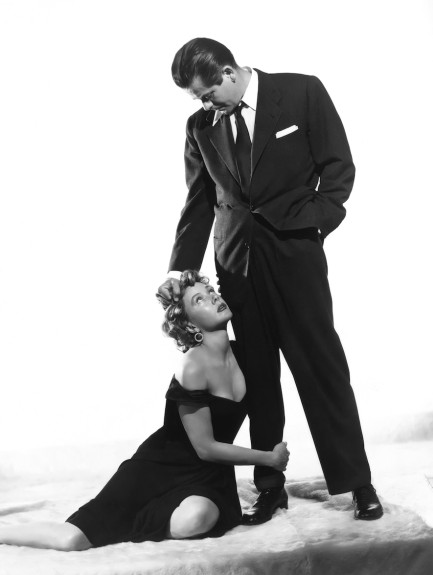 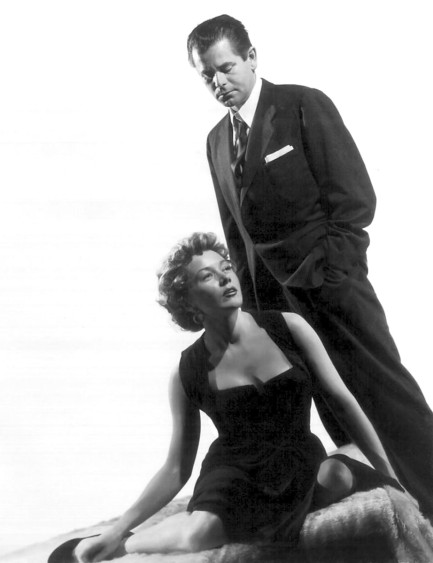 A while back we shared a promo photo of Glenn Ford and Gloria Grahame from 1953's The Big Heat that was meant to imply oral sex (it absolutely was, and you can see for yourself here). We commented on its weirdness, and noted that an actress would probably not be asked or made to pose that way today. The shot got us thinking about whether there were other kneeling promo shots from the mid-century era, and above you see two others from The Big Heat. Below we have more such shots, and while none are as jarring as that previous promo, they're all interesting. We assumed there would be few if any featuring kneeling males, but we found a couple. Even so, there are probably scores more kneeling actresses that we missed. While many of shots took the form they did to highlight the criminal/victim themes in their parent films, you still have to wonder what else—consciously or not—was in the various photograhers' minds. Anyway, just some food for thought this lovely Thursday. Ready, set discuss! 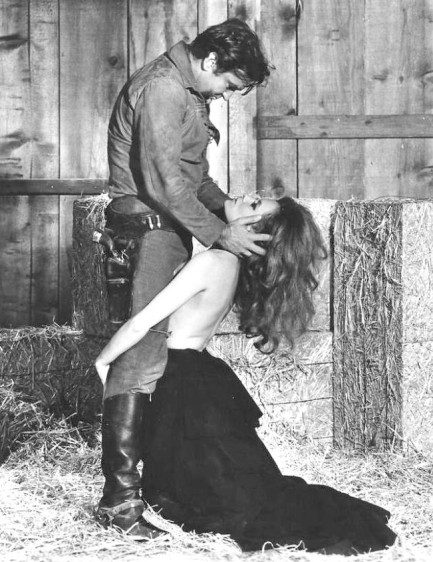 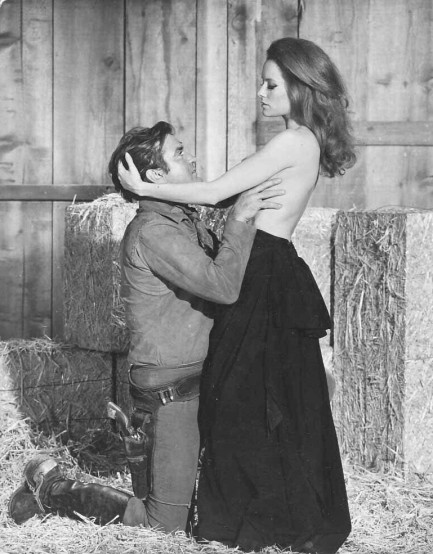 Rod Taylor and Luciana Pauluzzi swap subordinate positions for 1967's Chuka. Rod Taylor and Luciana Pauluzzi swap subordinate positions for 1967's Chuka.
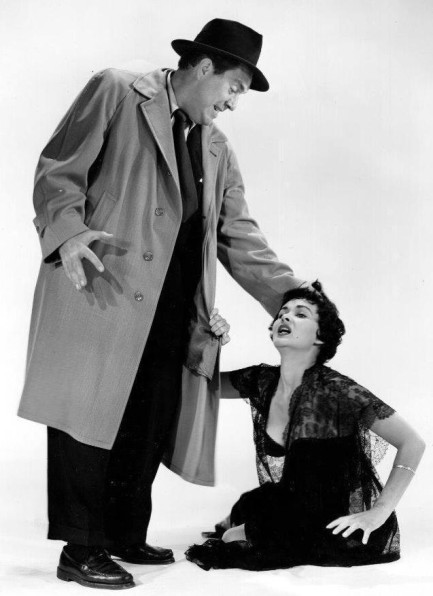 Edmund O'Brien goes for the time honored hair grab on Marla English for 1954's Shield for Murder. Edmund O'Brien goes for the time honored hair grab on Marla English for 1954's Shield for Murder.
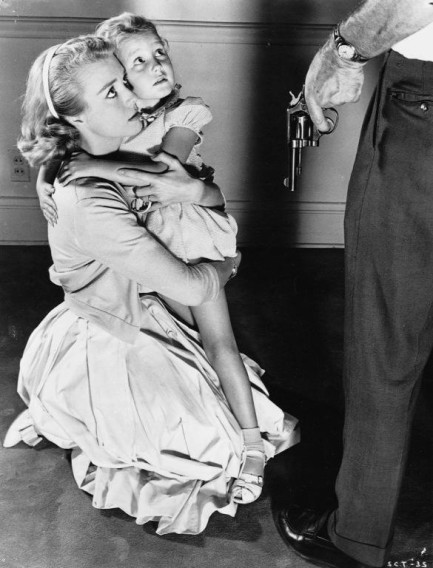 Inger Stevens and Terry Ann Ross for Cry Terror, an adaptation of a novel we talked about a few years ago. Inger Stevens and Terry Ann Ross for Cry Terror, an adaptation of a novel we talked about a few years ago.
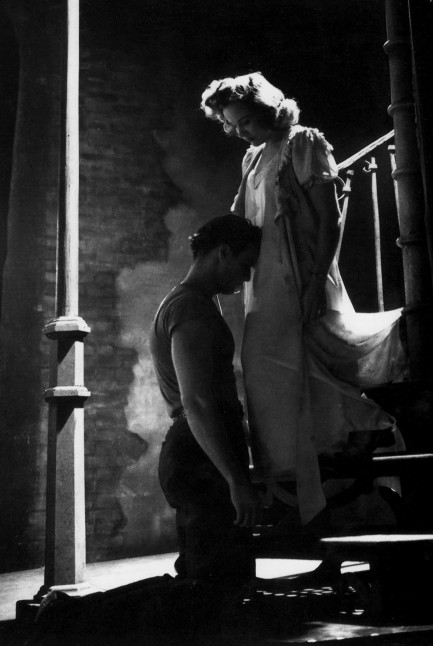 Kim Hunter soothes an overheated Marlon Brando in a promo for 1951's A Streetcar Named Desire. Kim Hunter soothes an overheated Marlon Brando in a promo for 1951's A Streetcar Named Desire.
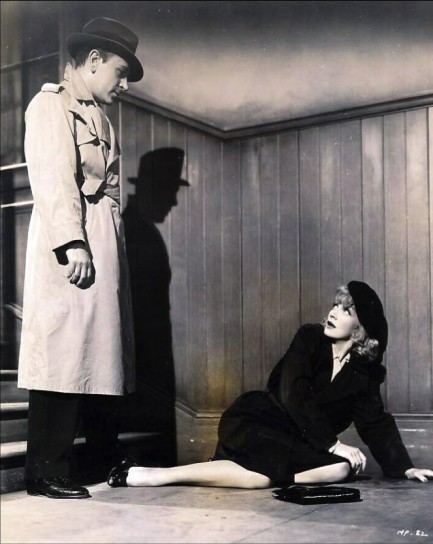 George Raft menaces Marlene Dietrich in the 1941 comedy Manpower. George Raft menaces Marlene Dietrich in the 1941 comedy Manpower.
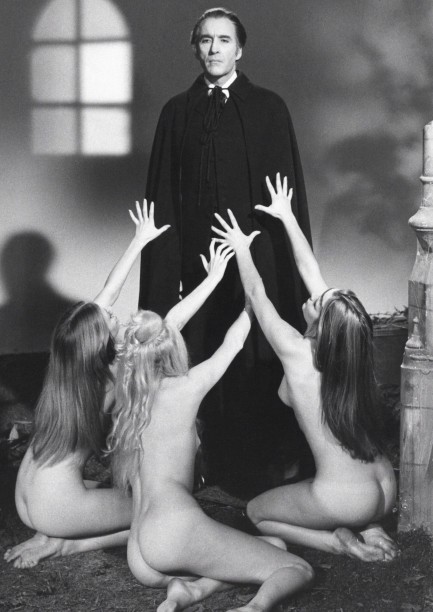 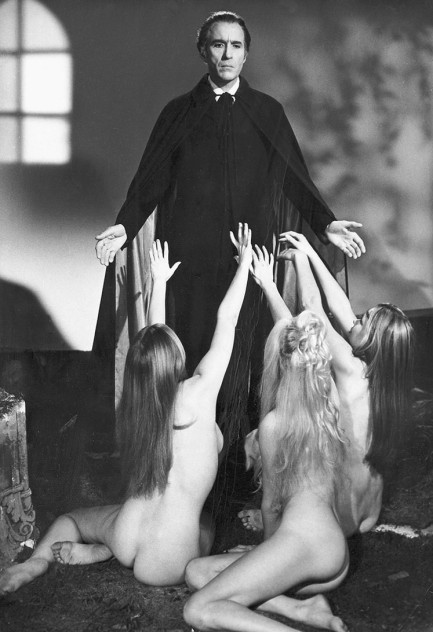 As promos go, these actually make sense. They show three unidentified models mesmerized by vampire Christopher Lee for 1970's Taste the Blood of Dracula. As promos go, these actually make sense. They show three unidentified models mesmerized by vampire Christopher Lee for 1970's Taste the Blood of Dracula.
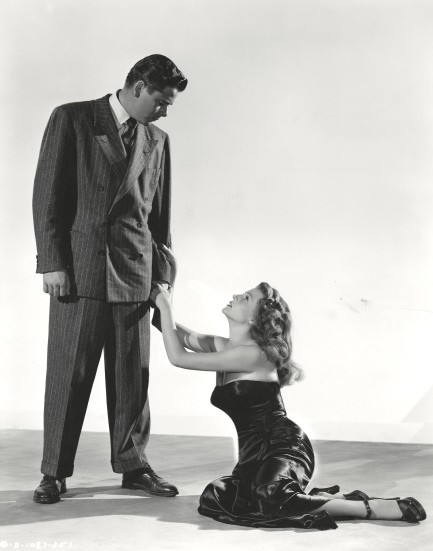 Glenn Ford is at it again, this time looming over Rita Hayworth for the 1946 classic Gilda. Glenn Ford is at it again, this time looming over Rita Hayworth for the 1946 classic Gilda. 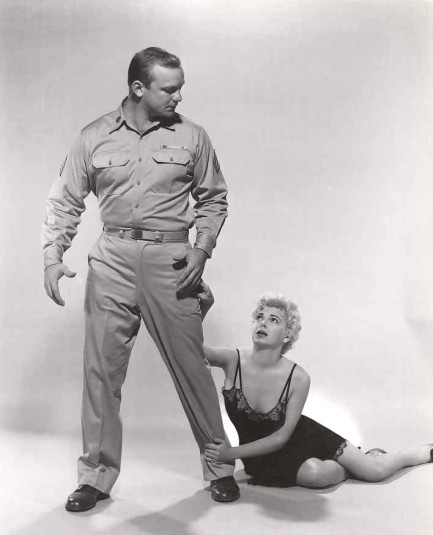 Aldo Ray and Barbara Nichols for 1958's The Naked and the Dead. Aldo Ray and Barbara Nichols for 1958's The Naked and the Dead.
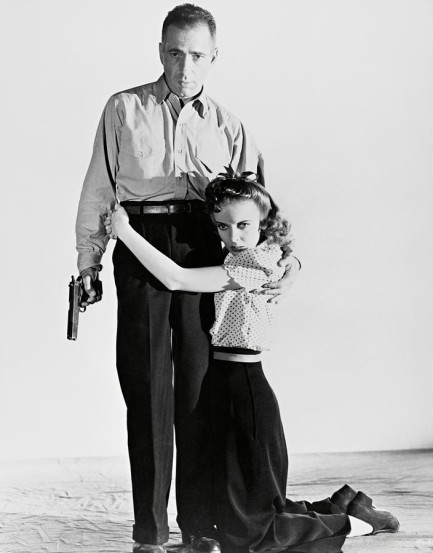 This one shows less domination and more protectiveness, as Humphrey Bogart prepares to defend Ida Lupino for High Sierra, 1941. This one shows less domination and more protectiveness, as Humphrey Bogart prepares to defend Ida Lupino for High Sierra, 1941.
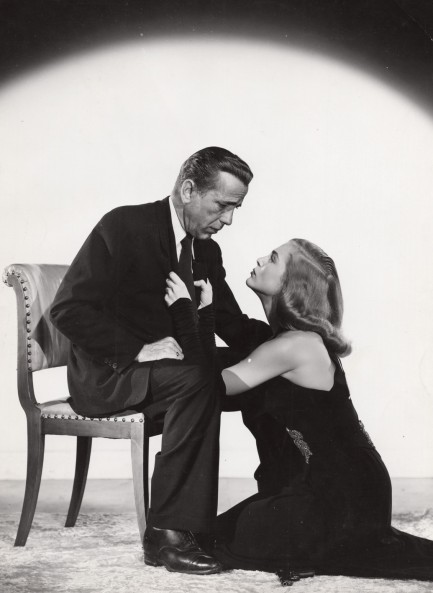 Humphrey once more. Here he's with Lizabeth Scott for Dead Reckoning, 1947. Humphrey once more. Here he's with Lizabeth Scott for Dead Reckoning, 1947.
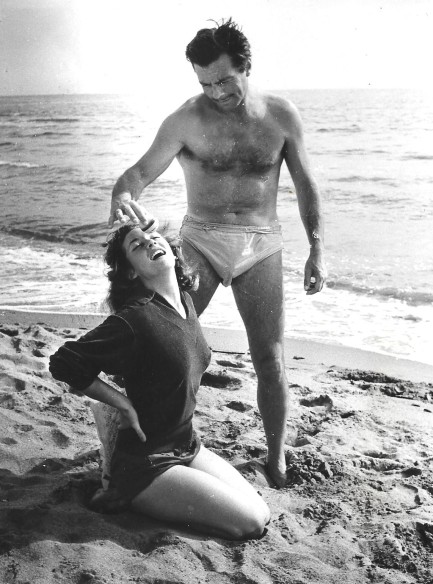 This shot shows Brazilian actress Fiorella Mari with an actor we can't identify in a movie we also can't identify. This shot shows Brazilian actress Fiorella Mari with an actor we can't identify in a movie we also can't identify.
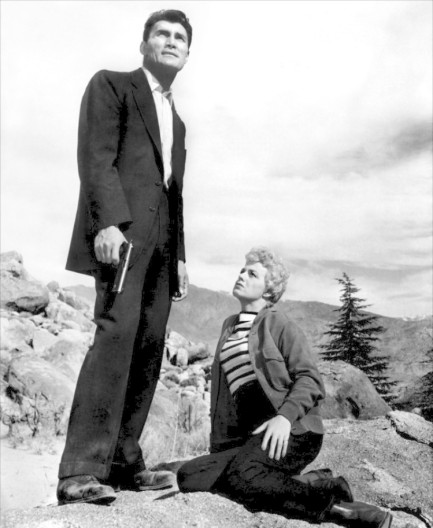 Shelly Winters and Jack Palance climb the highest mountain together for I Died a Thousand Times, 1955. Shelly Winters and Jack Palance climb the highest mountain together for I Died a Thousand Times, 1955.
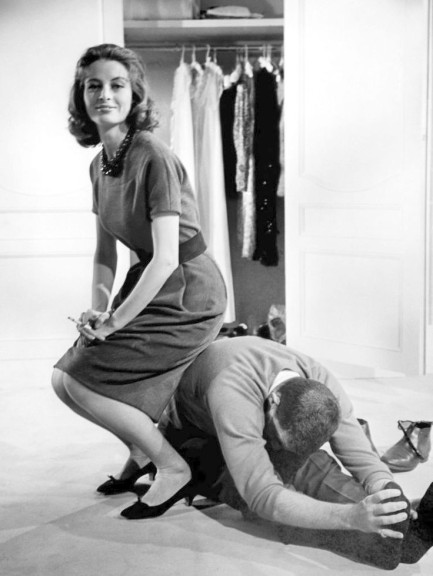 As we said, we didn't find as many examples of kneeling men, but we found this gem—Cappucine makes a seat of director Blake Edwards on the set of The Pink Panther in 1963. Does this count, though? While Edwards is subordinate, he isn't kneeling and it really isn’t a legit promo. As we said, we didn't find as many examples of kneeling men, but we found this gem—Cappucine makes a seat of director Blake Edwards on the set of The Pink Panther in 1963. Does this count, though? While Edwards is subordinate, he isn't kneeling and it really isn’t a legit promo.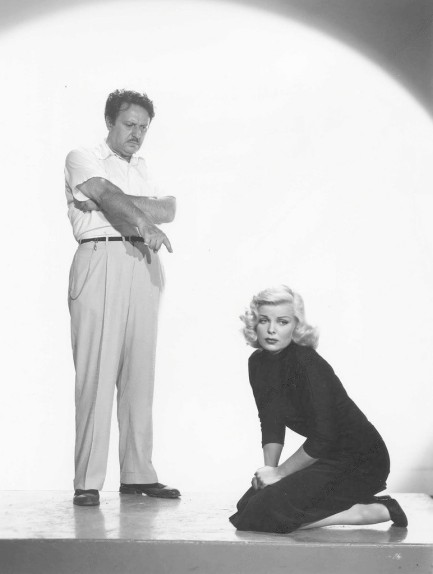 And lastly, in a curious example, Hugo Haas seems to tell Cleo Moore to stay in a shot made for 1953's One Girl's Confession. And lastly, in a curious example, Hugo Haas seems to tell Cleo Moore to stay in a shot made for 1953's One Girl's Confession.
 Ryan reaches the limits of control in crimefighting and romance. 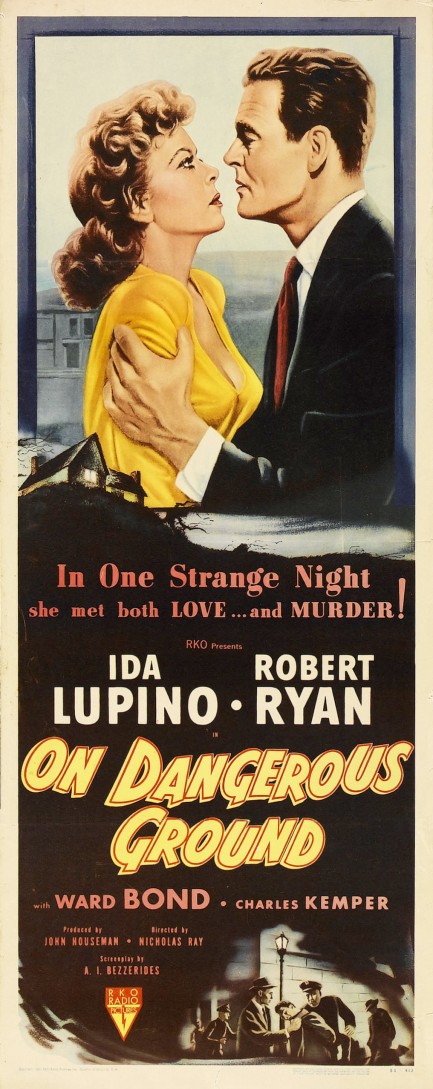
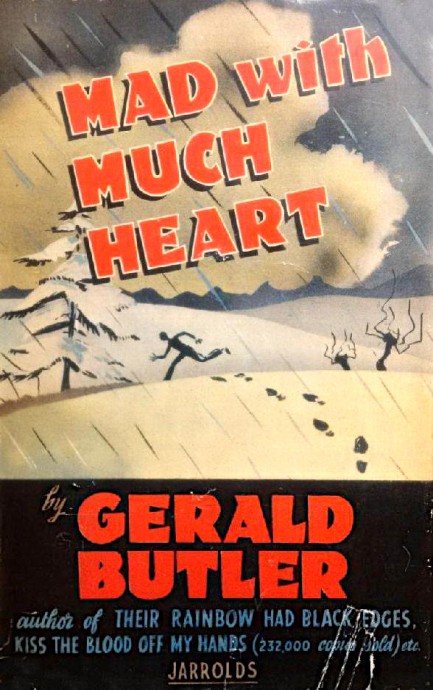 On Dangerous Ground, which premiered today in 1951, is a film noir melodrama about a bad cop who finds a reason to reset his professional and emotional lives. It was adapted from Gerard Butler's novel Mad with Much Heart, and that title pretty much tells the tale, as Robert Ryan plays a detective so mean even his colleagues warn him he's out of control. On Dangerous Ground, which premiered today in 1951, is a film noir melodrama about a bad cop who finds a reason to reset his professional and emotional lives. It was adapted from Gerard Butler's novel Mad with Much Heart, and that title pretty much tells the tale, as Robert Ryan plays a detective so mean even his colleagues warn him he's out of control.
He eventually ruptures a suspect's bladder during a beating. He deserves to be drummed out of the police and publicly shamed for such a transgression (in our opinion), but his chief, instead of handing him the pink slip he deserves, sends him to the mountains to help with a distant investigation until the heat cools. Once there Ryan finds a reason to reassess his life in the form of Ida Lupino, the blind but insightful sister of a murder suspect. She can sense bullshit and hurt miles away, and she becomes the first person that Ryan has actually listened to for a long time.
On Dangerous Ground is not by any means the best that film noir has to offer, but it has its moments, including extensive location shooting in snowy western Colorado. For noir completists it's certainly one to watch. Those with limited time allotments can probably give it a pass in favor of something better, but note that Lupino is a film noir icon as both an actress and director, and in fact directed some scenes in this movie, though she wasn't credited. Keep an eye out for her official work.
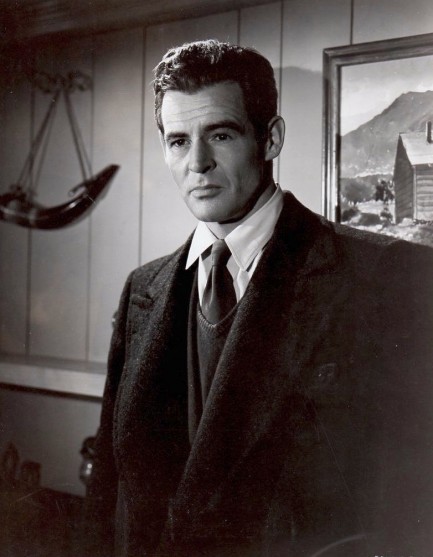 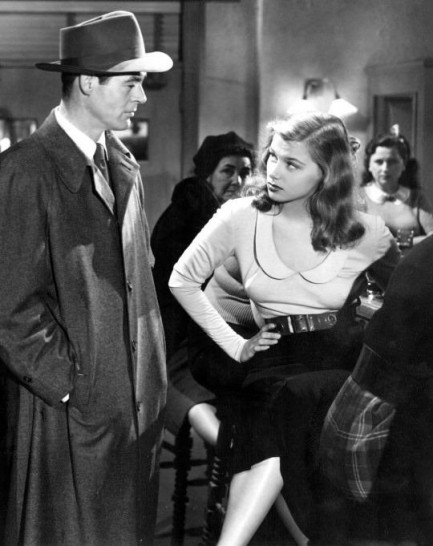  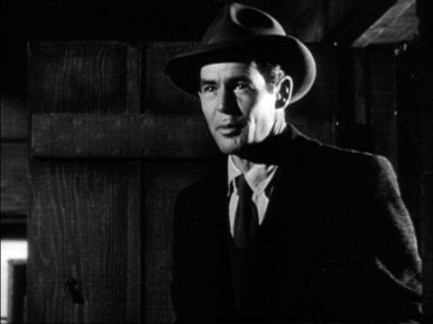  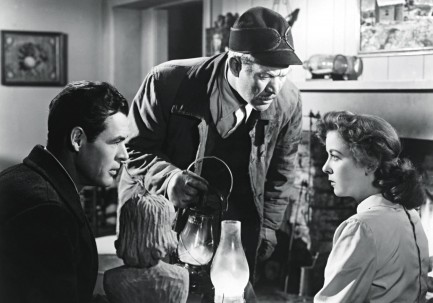 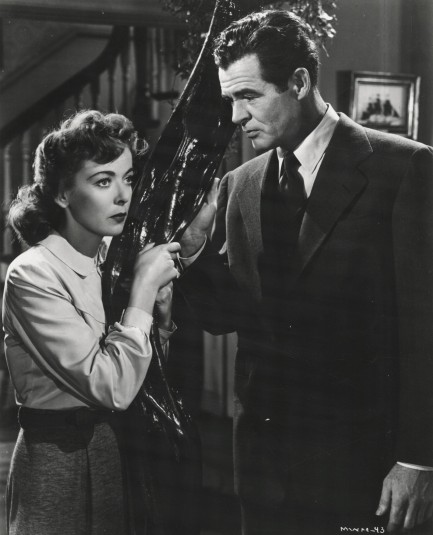 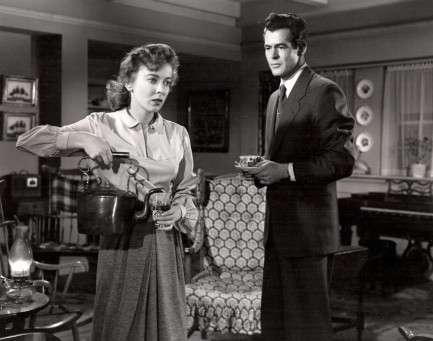 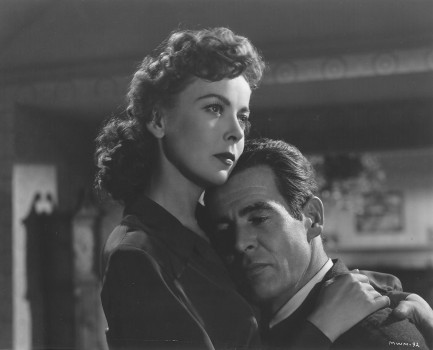 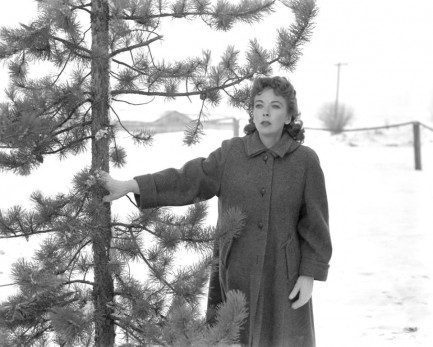 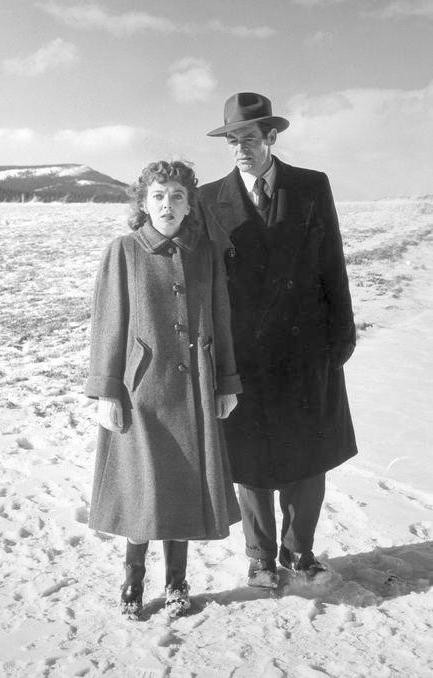 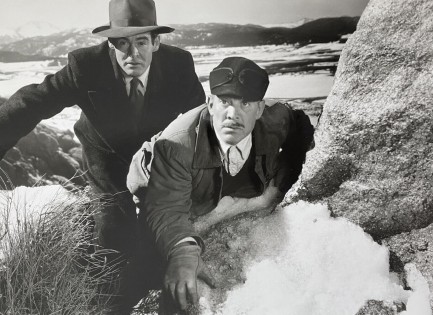 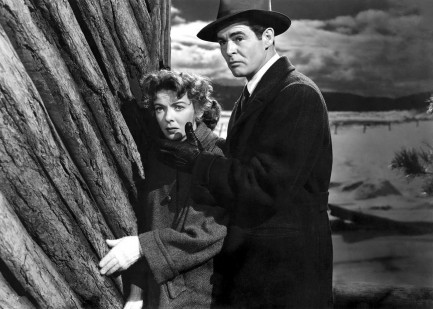
 They call it maximum security to scare you. I still get hair dye, cigarettes, good shoes, and pedicures, so I'm all good. 
Let's circle back to Jan Sterling, shall we? As you know, she's become a favorite actress of ours, and since she has a number of excellent promo images we might as well run through a few. This one was made for her 1955 drama Women's Prison, in which her co-stars were Ida Lupino, Audrey Totter, and Cleo Moore. Think we'll be watching that? Well, with three great film noir icons in the cast, along with Sterling herself as one of the most elegant felons ever, you can bet on it.
 Small town jealousy leads to big time problems in Lupino noir classic. 
Duh DUH duh duh DUH. He has a degree is philosophy...
Duh DUH duh duh DUH. He's broken over thirty bones...
Wait—wrong movie. That's the 1989 Road House, Patrick Swayze's unimprovable existential pugilistic epic. The movie we mean to discuss is the 1948 Road House, which premiered today and starred Ida Lupino, Cornel Wilde, Celeste Holm, and Richard Widmark. Nobody destroys an automobile showroom by driving a monster truck through it. Instead Ida Lupino drives her monster truck through a couple of male egos and teaches them lessons about a woman's right to choose her own life—and her own man. This gimmick-free proto-feminist drama is an excellent example from the film noir genre, and it's exhibit A why Lupino is a legend. She's mighty good in this. Mighty mighty good.
Duh DUH duh duh DUH. She has a degree from the school of hard knocks...
Duh DUH duh duh DUH. She's broken over thirty hearts... 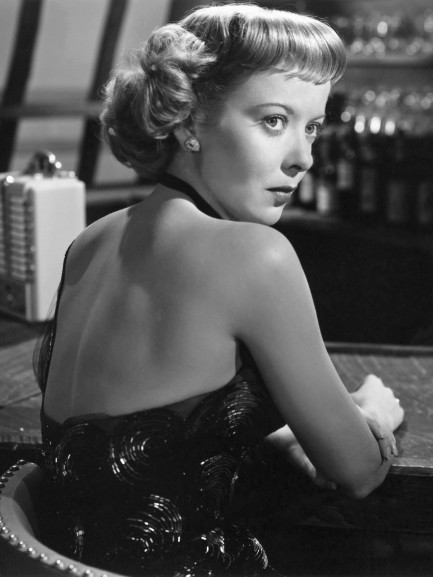 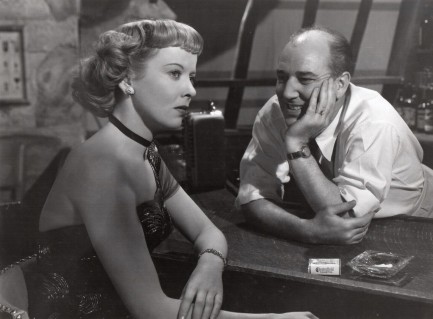 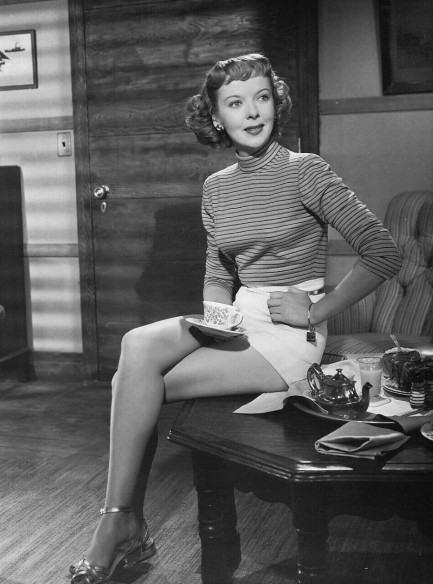 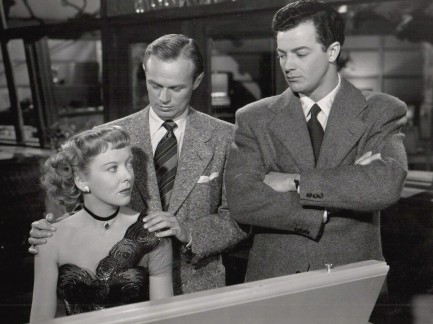  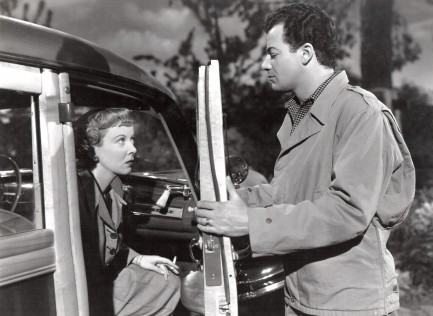 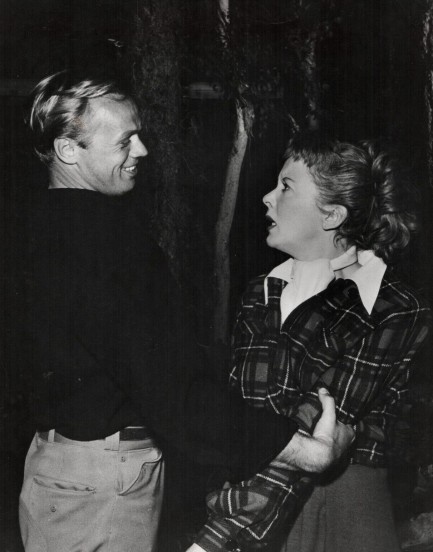 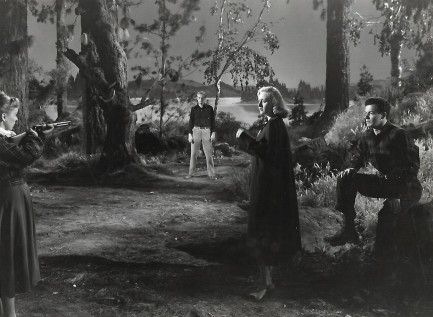 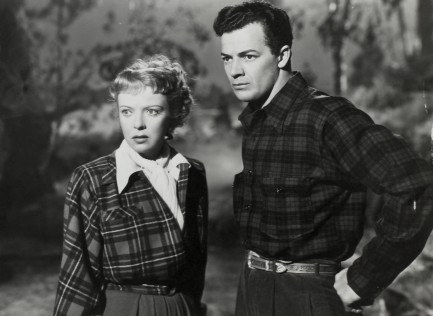 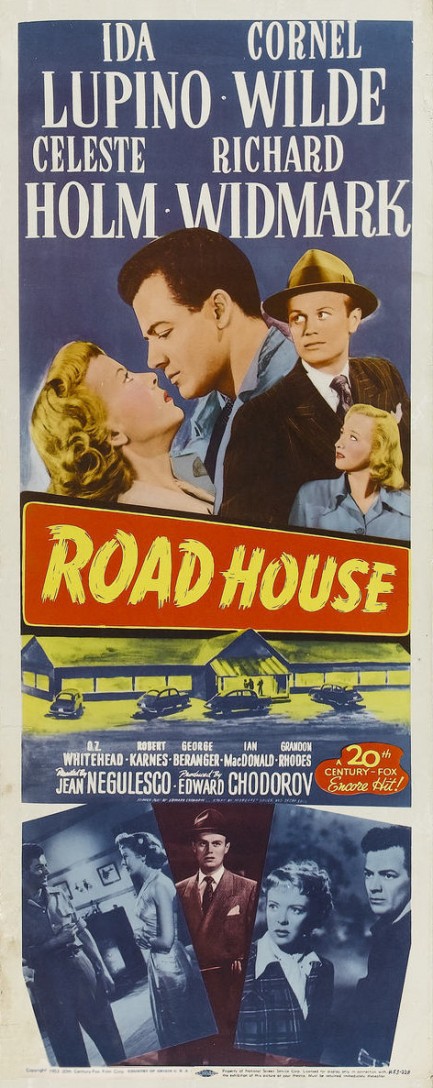
 Ida done it better. 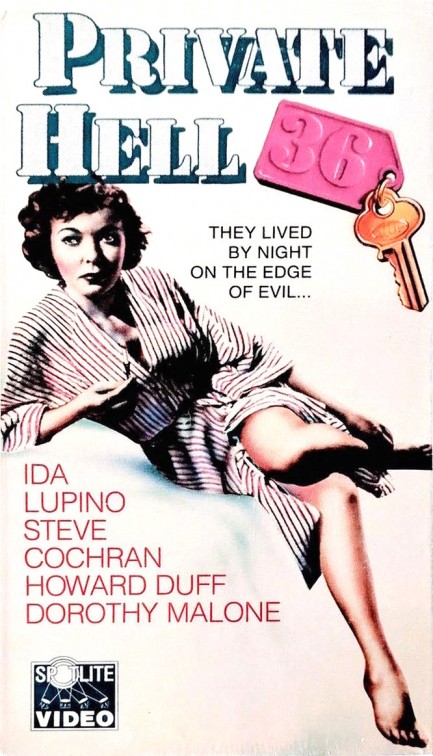
Occasionally we run across a VHS box we really like. This one for the 1954 film noir Private Hell 36, with Hollywood legend Ida Lupino in repose on the front, caught our eye with its simple but beautiful design. Anything with Lupino involved is worthwhile, including this film. We talked about it earlier this year, here.
 Ida done it her way. 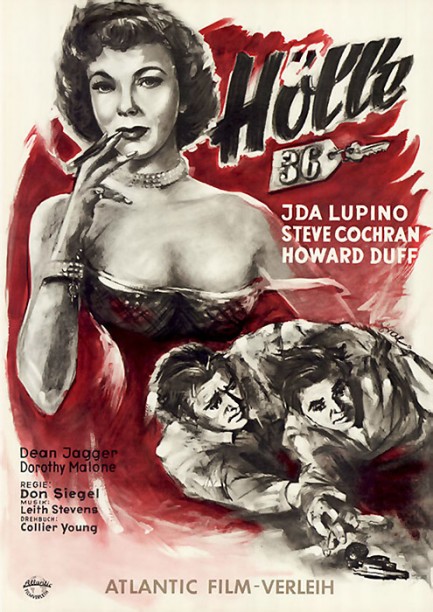
Above, an interesting German language promo poster for the Ida Lupino film noir Private Hell 36, which we talked about last month. Lupino is considered a film pioneer for her migration into directing, but she's always good in front of the camera too. This piece is signed, though illegibly, so another artist loses their chance for internet immortality. Private Hell 36 premiered in West Germany today in 1956
 We'd to hate to find out what the other thirty-five are like. 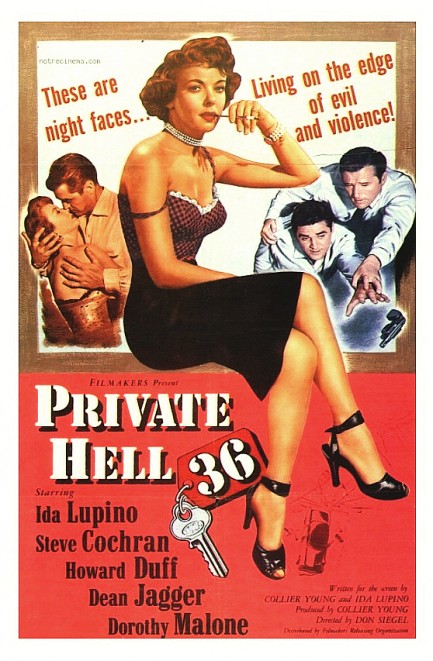 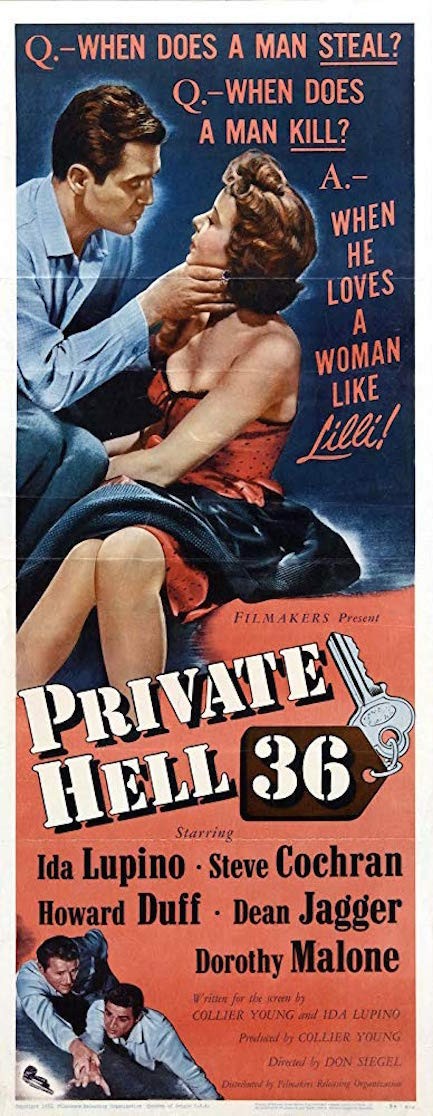
Private Hell 36. It doesn't mean anything, but what a great title. And it comes with two great promo posters. These are probably in the first two chambers of hell to lure you in. Made in 1954, this film noir co-stars and was co-written by Ida Lupino, who plays a woman who is convinced to help the police on a stakeout for a counterfeiter. She'd been passed a fake fifty but the police can't identify the crook unless she sees him and fingers him. As the days pass cop Steven Cochran takes a liking to her, and she to him. Star-crossed love in the noirish night. Lupino wants the finer things in life. Cochran wants to give them to her. When counterfeit bills start blowing on the wind, Cochran and his partner split over stealing the cash. You know where this goes—nowhere good.
Cochran is really good in this. As his decisions hurt those around him and his circumstances constrict his possibilities in the worst way, the performance he gives generates tension and empathy. Lupino does her usual great job, and the support from Dorothy Malone and Howard Duff is perfect, so in the end what you have is a solid film noir tinged with affecting interpersonal drama and working class pathos. In real life we don't feel the least bit bad for dirty cops, but that's the beauty of art—it puts you in other people's shoes and for an hour or two you understand. Private Hell 36 is short and to the point. It asks: If $80,000 landed in your lap would you keep it? In film noir, you better not. 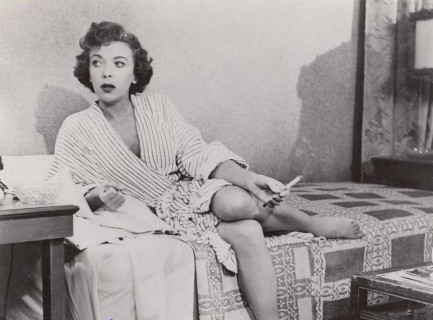 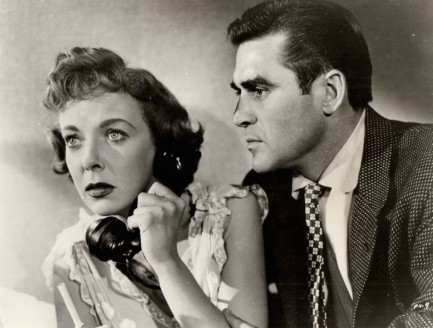 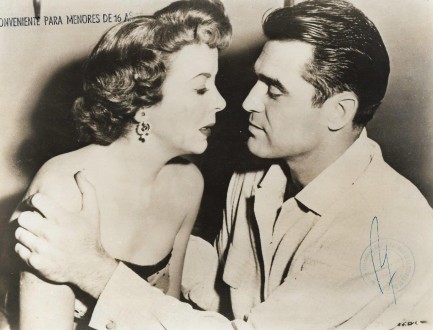 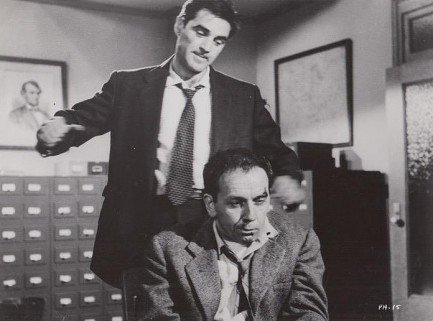 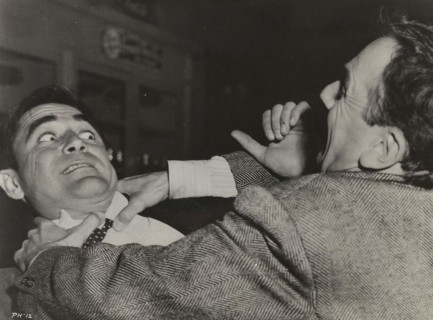 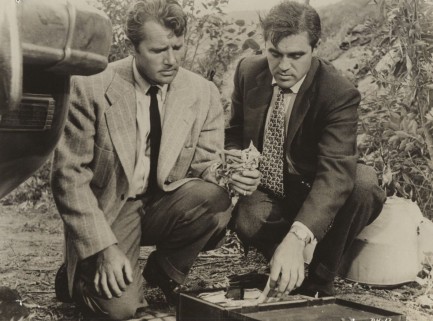 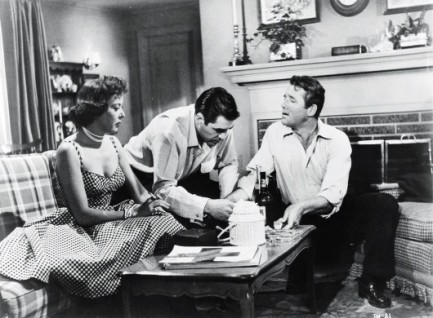 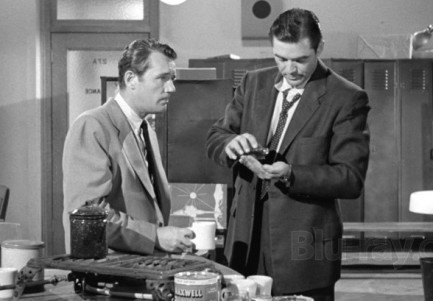 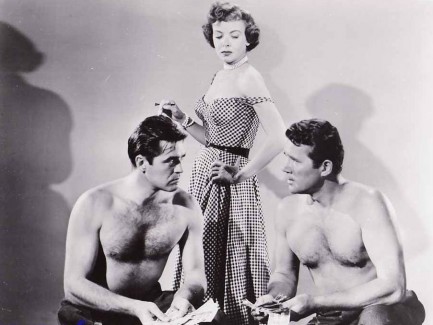
 Do you, Edmund, take this woman to be—and stop me if you've heard this before—your lawful wedded wife? 
The title of The Bigamist may seem to give the plot of the film away, but the point of this once-neglected-now-rediscovered drama is not the revelation of bigamy, but rather the details of how a man ends up with two wives. Edmond O'Brien plays a successful traveling salesman married to lovely Joan Fontaine, and their lives in San Francisco seem pretty good, despite all the time O'Brien spends away on sales trips. When they decide to adopt a child the agency's investigation uncovers O'Brien's other wife Ida Lupino in Los Angeles, and an entire domestic existence with her. Oh what a tangled web.
From that point forward The Bigamist is O'Brien's mea culpa to the insurance agent who busted him. This movie pops up a lot on television but not because it's great—because it's in the public domain, and because people are interested in the output of Lupino as a director. Yes, she helmed this one and did so with style, turning what was probably destined to be a forgettable melodrama into a quasi film noir. In the end the movie still isn't great, but it's a lot better than it should be thanks to Lupino. The Bigamist premiered in the U.S. today in 1953. 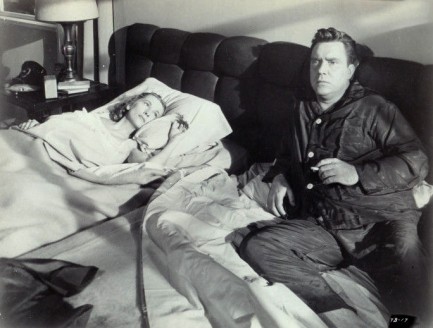 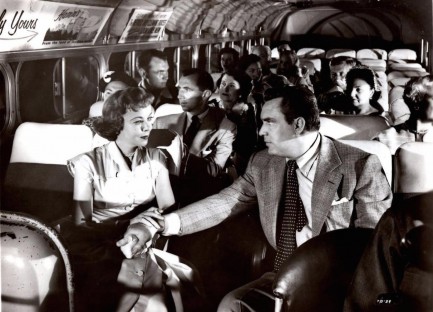  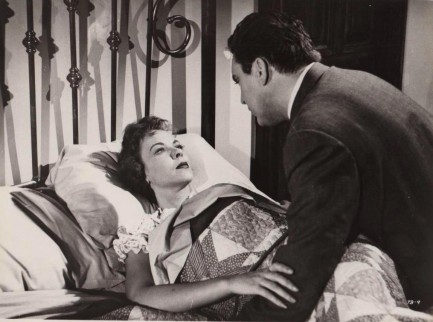
 Breakdown dead ahead. 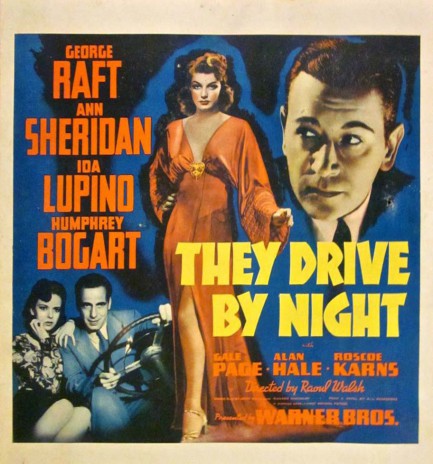
Speaking of driving, here’s another poster for the thriller They Drive by Night. We already talked about it a bit last month and shared a French poster from 1947. The movie is excellent, considering how the last act is written, and Ann Sheridan is especially good. We also like her in the center of this photo-illustrated poster. They Drive by Night had its world premier today in 1940.

|
 |

The headlines that mattered yesteryear.
2003—Hope Dies
Film legend Bob Hope dies of pneumonia two months after celebrating his 100th birthday. 1945—Churchill Given the Sack
In spite of admiring Winston Churchill as a great wartime leader, Britons elect
Clement Attlee the nation's new prime minister in a sweeping victory for the Labour Party over the Conservatives. 1952—Evita Peron Dies
Eva Duarte de Peron, aka Evita, wife of the president of the Argentine Republic, dies from cancer at age 33. Evita had brought the working classes into a position of political power never witnessed before, but was hated by the nation's powerful military class. She is lain to rest in Milan, Italy in a secret grave under a nun's name, but is eventually returned to Argentina for reburial beside her husband in 1974. 1943—Mussolini Calls It Quits
Italian dictator Benito Mussolini steps down as head of the armed forces and the government. It soon becomes clear that Il Duce did not relinquish power voluntarily, but was forced to resign after former Fascist colleagues turned against him. He is later installed by Germany as leader of the Italian Social Republic in the north of the country, but is killed by partisans in 1945.
|

|
|

It's easy. We have an uploader that makes it a snap. Use it to submit your art, text, header, and subhead. Your post can be funny, serious, or anything in between, as long as it's vintage pulp. You'll get a byline and experience the fleeting pride of free authorship. We'll edit your post for typos, but the rest is up to you. Click here to give us your best shot.

|
|


















 Edit: Vintage movies are excellent windows into bygone customs and practices. There's a great moment in this one. Rhonda Fleming and James Craig are chatting in her apartment late one night when the doorbell unexpectedly buzzes. They look at each other confused for a second, then Fleming says, “It's probably the drugstore. That was the last bottle of Scotch.”
Edit: Vintage movies are excellent windows into bygone customs and practices. There's a great moment in this one. Rhonda Fleming and James Craig are chatting in her apartment late one night when the doorbell unexpectedly buzzes. They look at each other confused for a second, then Fleming says, “It's probably the drugstore. That was the last bottle of Scotch.”



 Rod Taylor and Luciana Pauluzzi swap subordinate positions for 1967's Chuka.
Rod Taylor and Luciana Pauluzzi swap subordinate positions for 1967's Chuka. Edmund O'Brien goes for the time honored hair grab on Marla English for 1954's Shield for Murder.
Edmund O'Brien goes for the time honored hair grab on Marla English for 1954's Shield for Murder. Marilyn Monroe swoons as Richard Widmark snarls for Don't Bother To Knock, 1952.
Marilyn Monroe swoons as Richard Widmark snarls for Don't Bother To Knock, 1952. Inger Stevens and Terry Ann Ross for Cry Terror, an adaptation of a novel we talked about a few years ago.
Inger Stevens and Terry Ann Ross for Cry Terror, an adaptation of a novel we talked about a few years ago. Kim Hunter soothes an overheated Marlon Brando in a promo for 1951's A Streetcar Named Desire.
Kim Hunter soothes an overheated Marlon Brando in a promo for 1951's A Streetcar Named Desire. George Raft menaces Marlene Dietrich in the 1941 comedy Manpower.
George Raft menaces Marlene Dietrich in the 1941 comedy Manpower.
 As promos go, these actually make sense. They show three unidentified models mesmerized by vampire Christopher Lee for 1970's Taste the Blood of Dracula.
As promos go, these actually make sense. They show three unidentified models mesmerized by vampire Christopher Lee for 1970's Taste the Blood of Dracula. Glenn Ford is at it again, this time looming over Rita Hayworth for the 1946 classic Gilda.
Glenn Ford is at it again, this time looming over Rita Hayworth for the 1946 classic Gilda. Aldo Ray and Barbara Nichols for 1958's The Naked and the Dead.
Aldo Ray and Barbara Nichols for 1958's The Naked and the Dead. This one shows less domination and more protectiveness, as Humphrey Bogart prepares to defend Ida Lupino for High Sierra, 1941.
This one shows less domination and more protectiveness, as Humphrey Bogart prepares to defend Ida Lupino for High Sierra, 1941. Humphrey once more. Here he's with Lizabeth Scott for Dead Reckoning, 1947.
Humphrey once more. Here he's with Lizabeth Scott for Dead Reckoning, 1947. This shot shows Brazilian actress Fiorella Mari with an actor we can't identify in a movie we also can't identify.
This shot shows Brazilian actress Fiorella Mari with an actor we can't identify in a movie we also can't identify. Shelly Winters and Jack Palance climb the highest mountain together for I Died a Thousand Times, 1955.
Shelly Winters and Jack Palance climb the highest mountain together for I Died a Thousand Times, 1955. As we said, we didn't find as many examples of kneeling men, but we found this gem—Cappucine makes a seat of director Blake Edwards on the set of The Pink Panther in 1963. Does this count, though? While Edwards is subordinate, he isn't kneeling and it really isn’t a legit promo.
As we said, we didn't find as many examples of kneeling men, but we found this gem—Cappucine makes a seat of director Blake Edwards on the set of The Pink Panther in 1963. Does this count, though? While Edwards is subordinate, he isn't kneeling and it really isn’t a legit promo. And lastly, in a curious example, Hugo Haas seems to tell Cleo Moore to stay in a shot made for 1953's One Girl's Confession.
And lastly, in a curious example, Hugo Haas seems to tell Cleo Moore to stay in a shot made for 1953's One Girl's Confession. 

 On Dangerous Ground, which premiered today in 1951, is a film noir melodrama about a bad cop who finds a reason to reset his professional and emotional lives. It was adapted from Gerard Butler's novel Mad with Much Heart, and that title pretty much tells the tale, as Robert Ryan plays a detective so mean even his colleagues warn him he's out of control.
On Dangerous Ground, which premiered today in 1951, is a film noir melodrama about a bad cop who finds a reason to reset his professional and emotional lives. It was adapted from Gerard Butler's novel Mad with Much Heart, and that title pretty much tells the tale, as Robert Ryan plays a detective so mean even his colleagues warn him he's out of control.























































































































